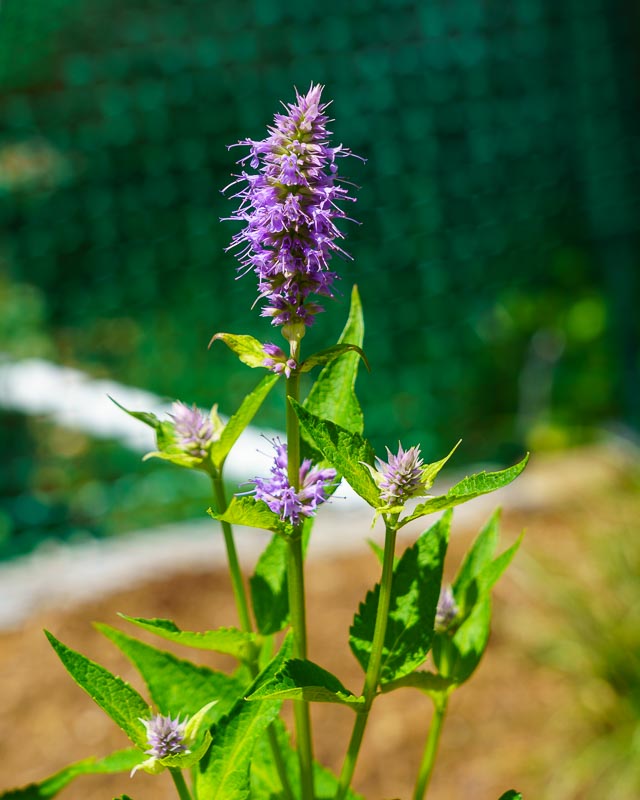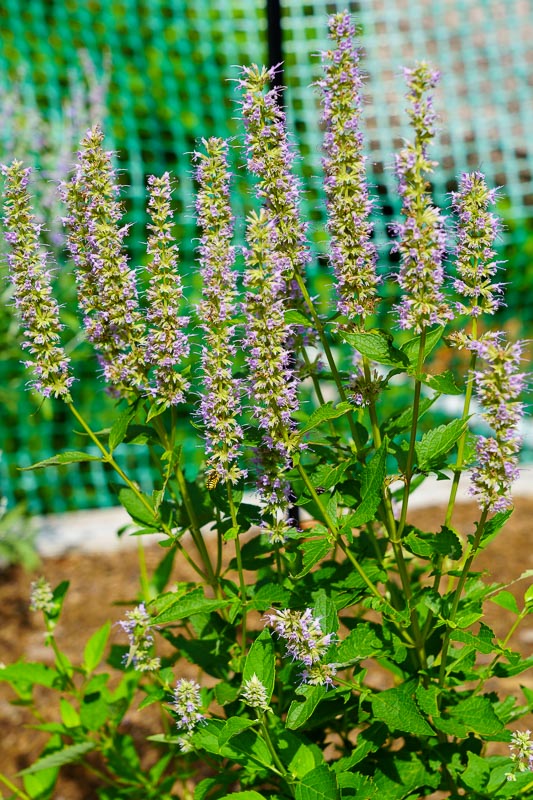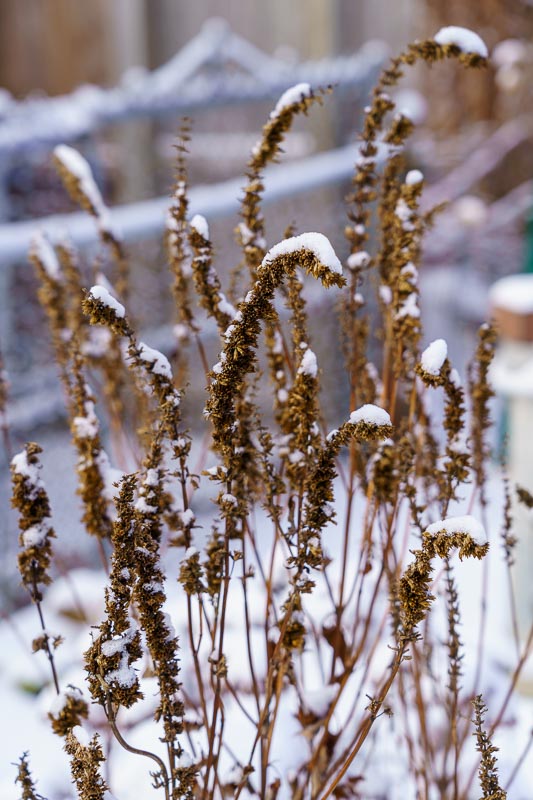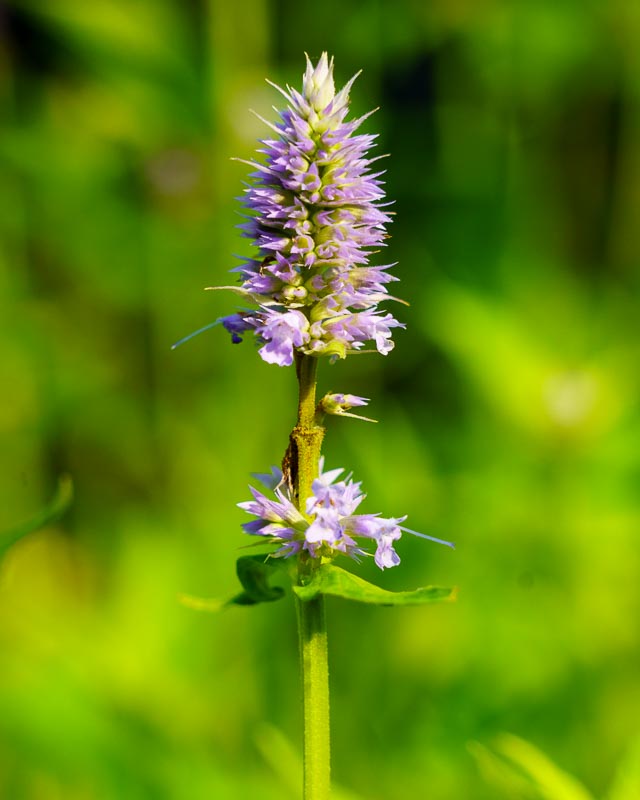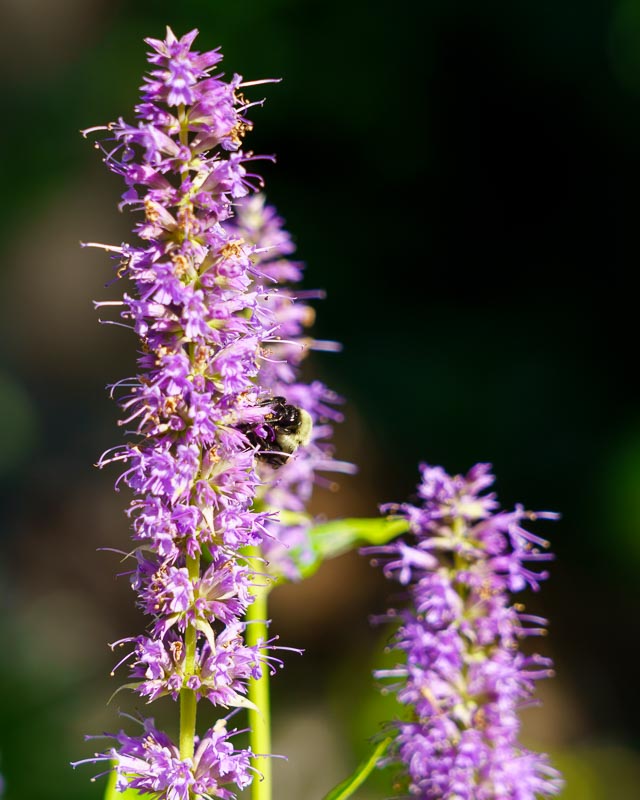Blue Fortune Anise Hyssop
Common Name:
Blue Fortune Anise Hyssop
Botanical Name:
Agastache 'Blue Fortune'
Mature Size:
32 - 36” tall, 18 - 24” wide
Sun Exposure:
Full Sun
Soil Type:
Fertile Chalk, Loam, Sand (not heavy clay, which doesn't drain well and causes winter problems)
Soil pH:
Neutral
Bloom Time:
Mid summer to early fall
Flower Color:
Lavender Blue
Care:
Plant Anise Hyssop in spring after the last frost. Establish seedlings any time until early summer. Space 18 to 24 inches apart in borders, wildflower gardens, herb gardens, or butterfly gardens (or as specimens in containers). Reaching 2 to 5 feet tall and 1 to 3 feet wide, these plants serve well in the middle or the back of perennial borders. Pair with companions such as Japanese anemones, other natives such as biennial brown-eyed Susan (Rudbeckia triloba), goldenrods such as Solidago rugosa ‘Fireworks,’ or with fellow herbs like garlic, chives, oregano, and thyme.
Soil:
Anise Hyssop will do best when planted in soil that is fertile and well-drained—some combination of sand, loam, chalk, or clay typically works well. Do your best to avoid soil that is too heavy, which can make it difficult for the roots to get established and may lead to root rot. Additionally, your soil should have a pH that is as close to neutral as possible—you can amend it with lime if it's too acidic.
Water:
Water newly planted Anise Hyssop weekly, if there is no rainfall, for the first four weeks. Water slowly and deeply, welcoming deep, spreading roots. Once plants are established, cease watering. Being drought tolerant, they are very easy to grow and care for.
Fertilizer:
Feed your Anise Hyssop in early spring every other year with about a bucket of organic compost that has been sprinkled around the base of the plant. Make sure to target the roots and leave a couple of inches of soil space between the compost and the plant's main stem.
Pruning:
Anise Hyssop is a fairly independent plant and won't need much attention once it has established itself in your landscape. Occasional pruning can help encourage the plant to bloom and keep the plant looking its best. Pruning is best done in early spring, using a pair of clean pruning shears. Cut back up to one-third of the plant to encourage more full, bushy growth. Remove any dead plant material just above a promising bud node.
Source:
https://www.thespruce.com/anise-hyssop-plant-profile-5118429
